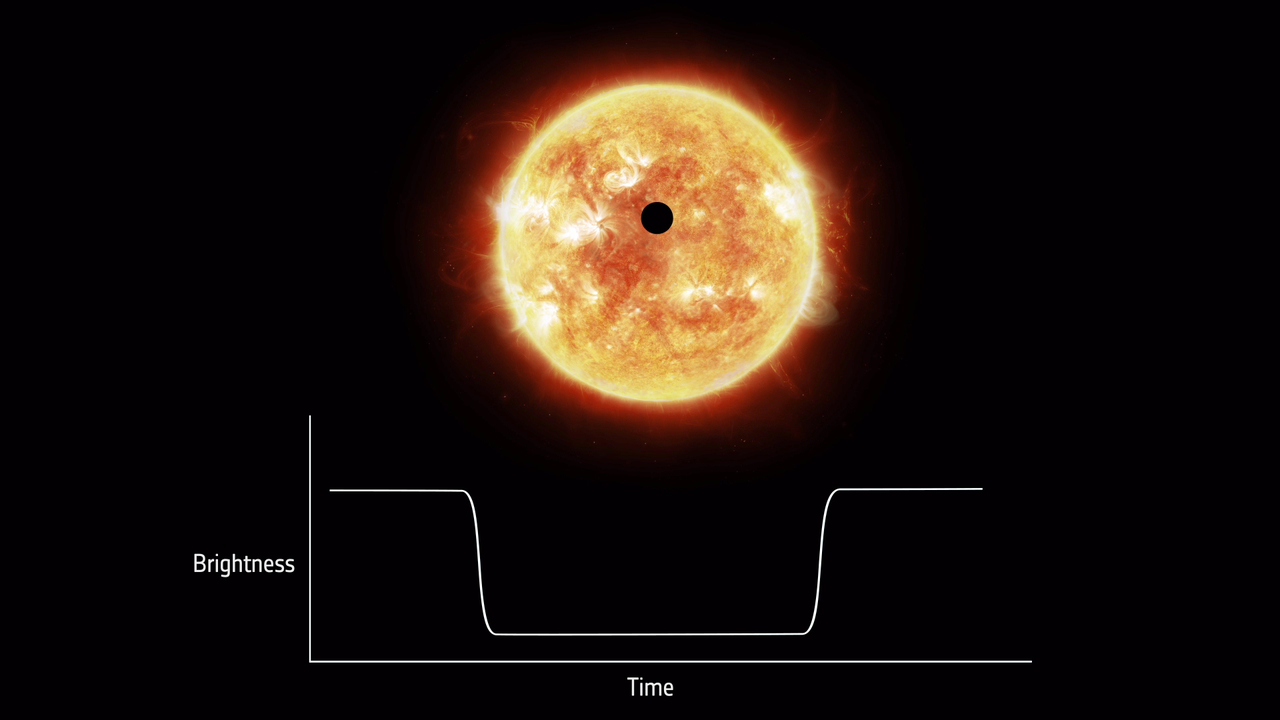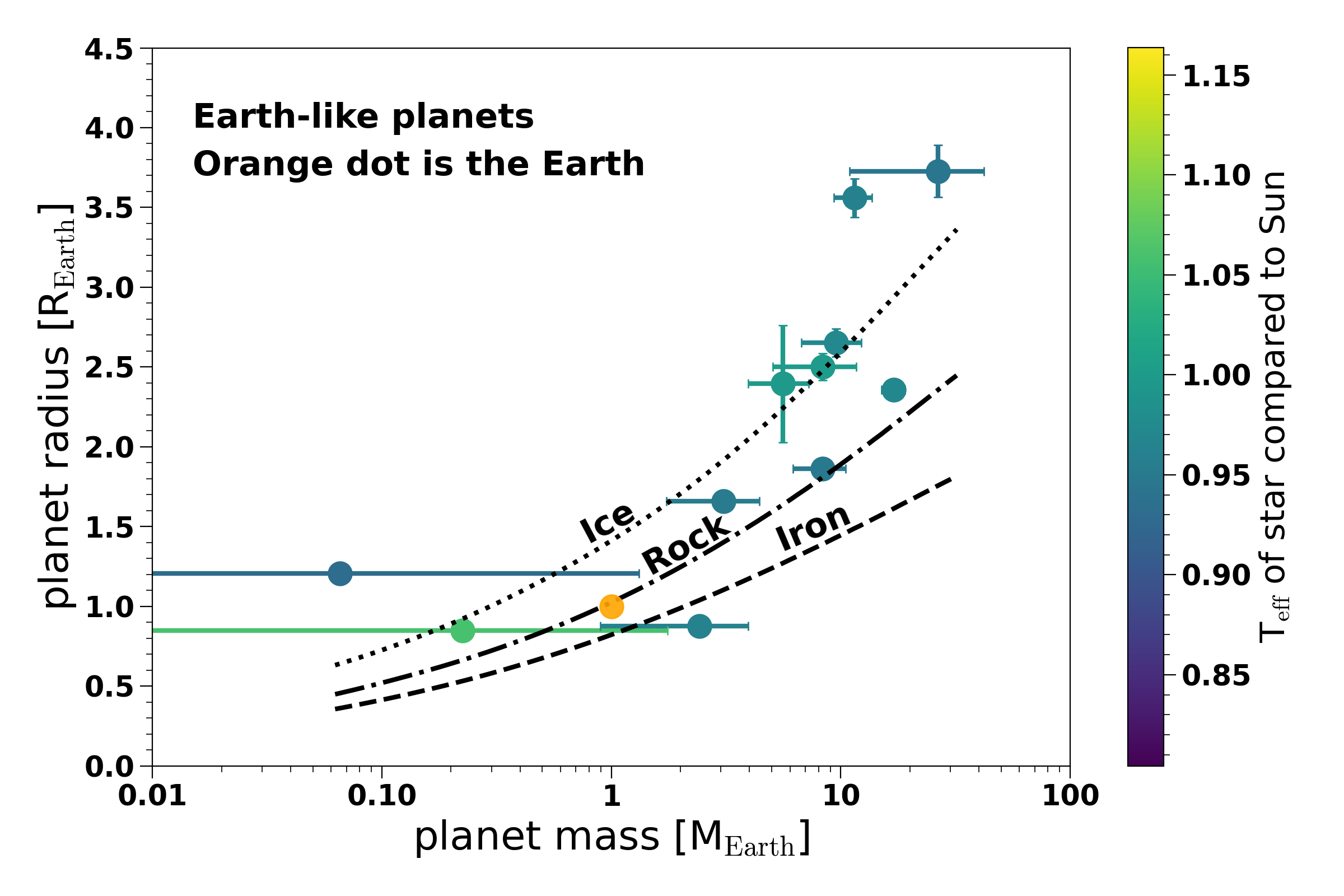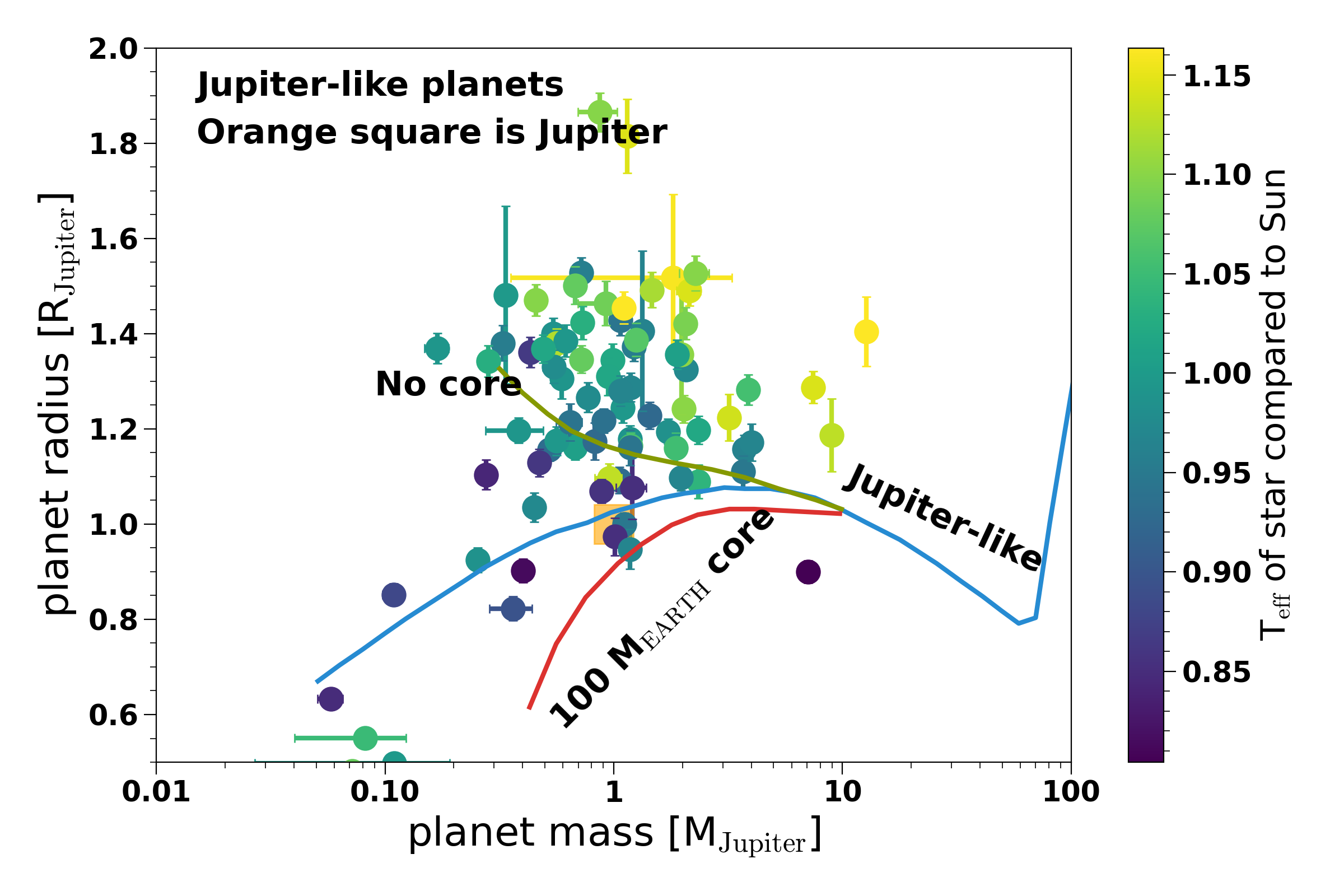Did something move in front? - Gaia
Did something move in front of the star?
Gaia's exoplanets and host stars in DR3
The power of Gaia for the exoplanet field comes from two directions. Gaia has proven to be able to detect extrasolar planets (exoplanets), both through its photometry and through its astrometry. But Gaia also helps to improve our knowledge of exoplanets by providing detailed information on the star that the exoplanet orbits, the so-called “host stars”.
Gaia data release 3 contains the astrophysical characterisation of half a billion stars, among which are the few thousand known exoplanet host stars. In the paper “Gaia Data Release 3: Golden Sample of Astrophysical Parameters” by Gaia Collaboration, Creevey, et al. 2022 a high-quality sample of these stars was defined, similar in mass to the Sun, known as F-, G-, K-, and M-type stars. These stars are also the main targets for the upcoming ESA PLATO mission, whose objective is to identify and characterise Earth-like exoplanets with the transit method.
The estimation of the planetary parameters “radius” and “mass” depends entirely on the knowledge of the host star’s radius and mass. Additionally, an estimation of the age of the planet is obtained by assuming the age of the star. This is exactly the same approach used to estimate the ages of the planets in our Solar System.
Within this high quality sample of exoplanet host stars, there are 354 exoplanets for which the planet radius can be derived and 94 planets for which both a mass and a radius can be derived using the Golden Sample parameters and data obtained from other observatories that measure the planetary transits and/or radial velocity wobble signal (see below).
With the high-quality sample of star parameters, the masses and radii of the extrasolar planets were measured with very high precision (the error bars are generally very small, of the order of 2.5% for planet radii and 6.7% for planet masses). In the figure below, on the left the Earth-like planets in the sample are shown, with the Earth represented by the orange circle. A bluer colour indicates if the host star is cooler, a more green-yellow colour indicates a host star hotter than our Sun.
Figure 1: In these two figures the mass and radius are shown of known extrasolar planets whose host stars are among the FGKM Golden Sample. On the left the Earth-like planets are shown and on the right Jupiter-like planets from this sample. The curves show what theoretical models (Guillot & Gautier 2015, in Treatise on Geophysics, ed. G. Schubert, 529-557; Zeng et al. 2016, ApJ, 819, 127) predict with different assumptions about the planet composition and structure. The radii, masses and ages of the extrasolar planets are determined using the stellar parameters that are published in Gaia DR3. Credit: adapted from Gaia Collaboration, Creevey et al. 2022 - CC BY-SA 3.0 IGO.
Some theoretical models are shown as well, illustrating how the radius and mass are related depending on the composition and structure of the planet. With these high precision parameters, it is much easier to say what the planet is made of because the error bars only cross one or two models. The two large error bars are due to a poor ground-based determination of the wobble signal, but their radii are now known with very high precision. On the left a similar figure shows Jupiter-like planets, with Jupiter illustrated by the orange square.
While an improved knowledge of the stars hosting extrasolar planets helps to update our knowledge of known exoplanets, Gaia is able to discover new extrasolar planets as well.
The search for exoplanets through astrometry follows naturally from the non-single star pipeline. For non-single stars one solves for the wobble seen in the position of the photocentre. The lighter the companion the smaller the wobble. Gaia’s astrometry is accurate enough for measuring the wobble corresponding to giant exoplanets similar to Jupiter.
Figure 2: Astrometric orbit of HD81040 (left panel) as determined by Gaia. North is up and East is left. The sky-projected orbit model about the system barycentre marked with an "x" is shown in grey. The star's modelled parallax and proper motion is shown in the top-right panel by the solid curve, where open circles indicate the times when the star crossed the Gaia field-of-view. The arrow indicates the direction of motion. The bottom right panel shows the post-fit residual normal-points. Credit: ESA/Gaia/DPAC, CC BY-SA 3.0 IGO. This was published here.
Gaia Data Release 3 contains a set of exoplanet candidates as obtained from these wobbles seen in the photocenter of the star. In figure 2 one can see that Gaia is able to detect the known exoplanet HD81040. This result is described in more detail in the paper "Gaia Data Release 3: Stellar multiplicity, a teaser for the hidden treasure" by Gaia Collaboration, Arenou, et al. 2022.
With an increasing amount of observations obtained for the same stars, wobbles can be identified more easily. With Gaia Data Release 4, Gaia is expected to discover a wealth of exoplanet candidates through astrometric detection.
Finding exoplanets also follows naturally from Gaia’s variability processing pipeline, where the different ways of the dimming and brightening of stars are disentangled to see what could be the cause. When an exoplanet moves in front of the star, it blocks the light coming from the star and hence the star’s light is temporarily dimmed. When these dimming events occur periodically it may indicate the presence of such exoplanets.

Figure 3: A planet crossing the line-of-sight to its host star, as seen by the telescope, causing the star to appear dimmer. Credits: ESA. Published here.
Gaia also contributes with detections of transiting exoplanets, and can even discover new ones, a result described in a recently published method paper from Gaia (Panahi et al., 2022, accepted for publication in A&A). The first two exoplanets discovered by Gaia – Gaia-1b and Gaia-2b – are giant planets that orbit their host star with periods of a few days. Such short periods mean that those planets are very close to the stars and are therefore dubbed ‘Hot Jupiters’ – giant planets that are strongly heated by the radiation of their host stars.
Finally, Gaia can also detect hot, massive giant planets on very tight orbits from the minute shifts of stellar spectral lines measured by the RVS instrument. A small sample of candidates has been uncovered with this method, including a known transiting exoplanet (WASP-18b) that has also been detected by Gaia's variability processing pipeline.
The main advantage of Gaia over dedicated surveys is the immense sample of stars it observes. This will allow the detection of many more giant planets by the end of the Gaia mission.
Gaia's candidate exoplanets will be named following the method of detection. Once the candidate becomes a confirmed exoplanet, it changes its name to Gaia-#b. The list of Gaia exoplanets has been posted on Gaia Cosmos. It will be updated regularly when new candidates are found.
An exciting first taste of what promises to be an exciting dataset in Gaia Data Release 4!
Credits: ESA/Gaia/DPAC
Story written by: Tineke Roegiers, Johannes Sahlmann, Aviad Panahi, Shay Zucker, Orlagh Creevey, Anthony Brown, Alessandro Sozzetti
Published: 13 June 2022
- Removed a total of (8) style text-align:center;
- Removed a total of (18) style text-align:justify;
- Removed a total of (1) style margin:0;
More Gaia DR3 stories?
Where are the stars? How far away are they? How bright are the stars?
What colour do they have? What are the stars made of?
Where do they go? Where do they come from? Do they approach us? Do they move away?
Did something move in front of the star? What is in between the stars?
How big, warm, old, ... are they? How do they Blink?
Is it a double star? Do they go boom? Is it a galaxy?
Is it a solar system object? Is it a quasar?
Who created the data? Can I Use Gaia data with other observatories?
How did DPAC produce the data for this star? Where is the data?
-
ESA's press release of Gaia Data Release 3
-
Gaia's Early Data Release 3 stories
-
ESA's press release of Gaia Early Data Release 3
- Removed a total of (16) style text-align:center;








































 Sign in
Sign in
 Science & Technology
Science & Technology




